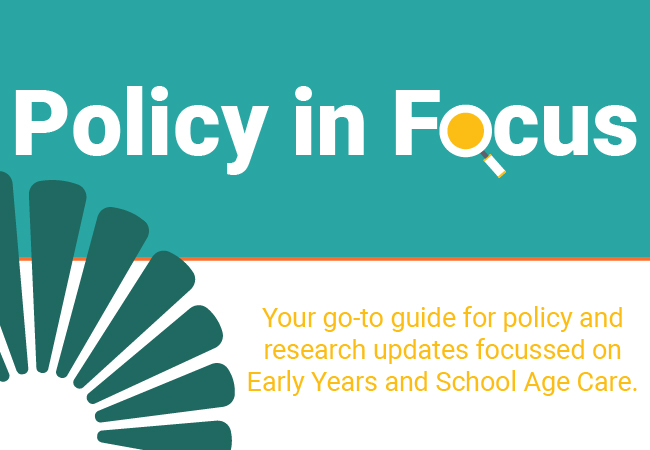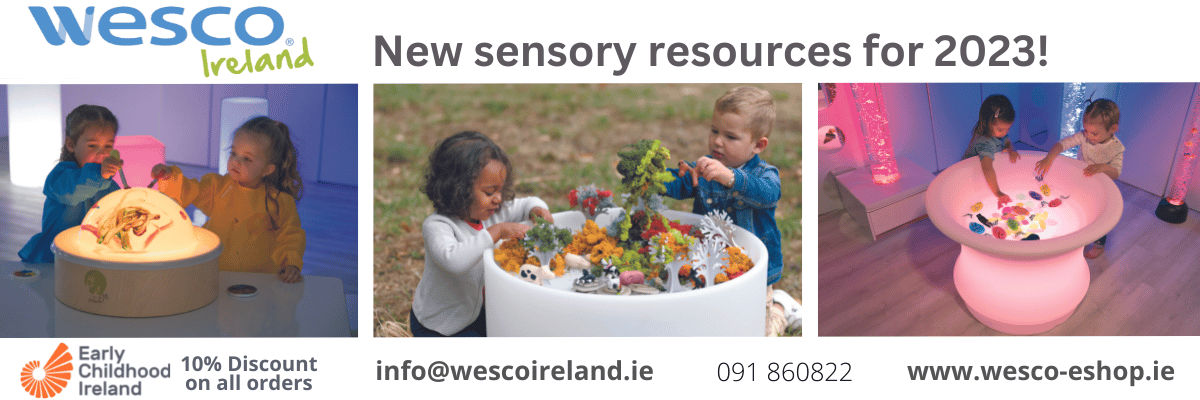Move outside

Why do we ever go inside! The more I consider the value of the outdoor spaces as a learning environment the more I wonder why we have taken so long to really value this. Of course, many educators have always known this, and we have had wonderful pioneering practice in Ireland in outdoor play. But we have COVID-19 to thank in many ways for a deeper appreciation, especially among parents and even the media, of the merits of being outside for long periods. These merits can include fresh air, space to move, and opportunities to experience weather and climate.
There appears to be an increased acceptance that being outside in cold, damp weather will not make children sick, and that appropriate clothing is the main factor in ensuring that children are happy and comfortable in the great outdoors. This is such a positive development, and while the past two pandemic years have brought much misery and hardship, this is one positive we can bring forward.
When I was chatting with Christina Duff for Early Childhood Ireland’s current podcast episode about the role that movement behaviour has in ensuring wellbeing I was thinking about the Scéalta blogs we have had over the past few weeks. These blogs have clearly shown how even quite small spaces can provide for children to be active learners, exploring nature, developing gross and fine motor skills, and increasing their vestibular system and proprioceptive senses.
Christina refers to the value of loose parts, talking about having things in the environment that are jumpable, splashable, rollable, kickable, throwable, catchable and climbable. I thought this was a really good ‘checklist’ to have in mind when reviewing an outdoor environment. As we come near the end of another ECCE year and maybe prepare for summer camps over the coming months it might be time to have a look at what affordances there are in your outdoor spaces for children to be active in the ways Christina describes.
- Are there steps, logs or other things children can jump from, ensuring the landing space is clear?
- Are there natural or created dips in the ground that children can jump in after the rain, to splash?
- Are there items like short logs, cylindrical toys or balls that children can roll and a variety of gradients so they can explore the idea of rolling something up a hill or down a slope?
- Are there balls, beanbags and other similar resources that children can throw and kick?
Try to have a selection of throwable items, so some are lighter and heavier and again, try to have a space where these can be thrown or kicked without hitting someone, or that if they do accidentally hit someone, they will not cause injury. Alternatively, have a basket or bucket that children can be encouraged to aim for when throwing. And of course, thrown items can be caught sometimes, thus supporting another of the fundamental movement skills that children need to develop.
And finally, what is in your environment that is climbable? Climbing frames can be great but do take up a lot of space. Are there natural items children can climb? Several years ago, I was in a setting that had a large size Connect4 game outside and the toddlers were enabled to use chairs to climb up and stand on to take part in the game if they wished. I have also seen climbing walls in settings too, which take up little or no space. A crash pad at the base ensures that if a tumble happens, the landing is soft! If you have sturdy trees in your environment, children can climb those.
These challenges will not be for every child, but for those that do like to explore with their entire body, having the opportunities available to enable them to do so is very important. And so many of these experiences simply cannot be provided indoors.
And we haven’t even looked at the STEM learning that takes place outside. All the developments that happen in nature every day; leaves changing colour, plants shrivelling because they need to be watered after a few dry days, those same plants maybe get waterlogged if the watering was over-enthusiastic! Watching bugs and creatures scurry away if the stone or log they live under is disturbed is fascinating for children.
The opportunities for fun, play and learning are just endless. So again, I ask why we ever go inside!









